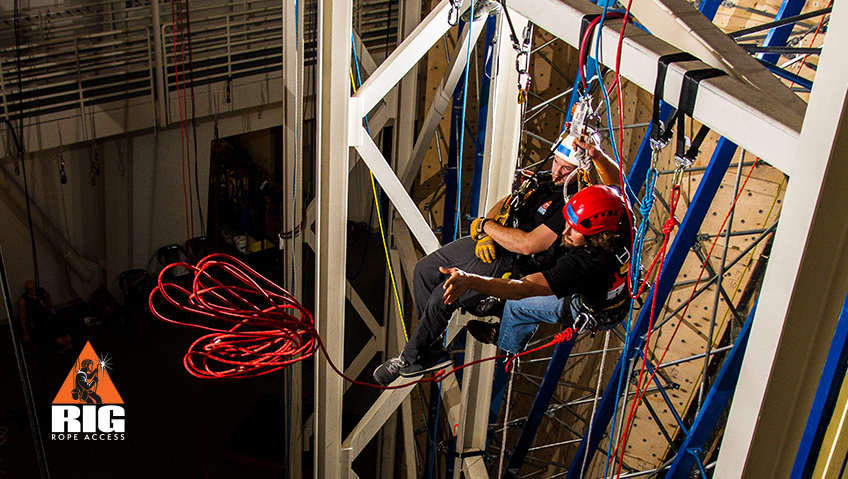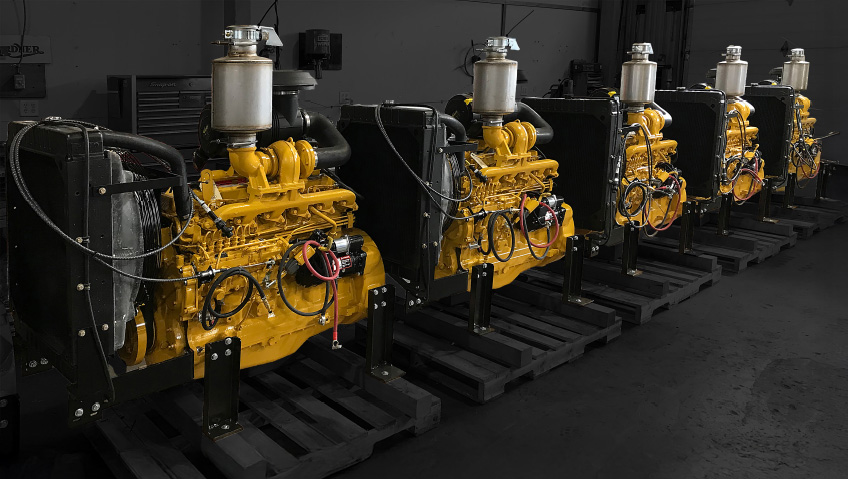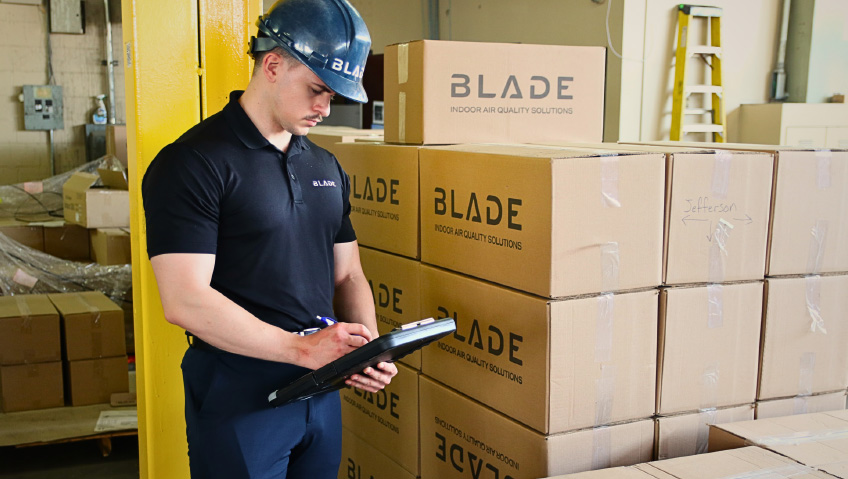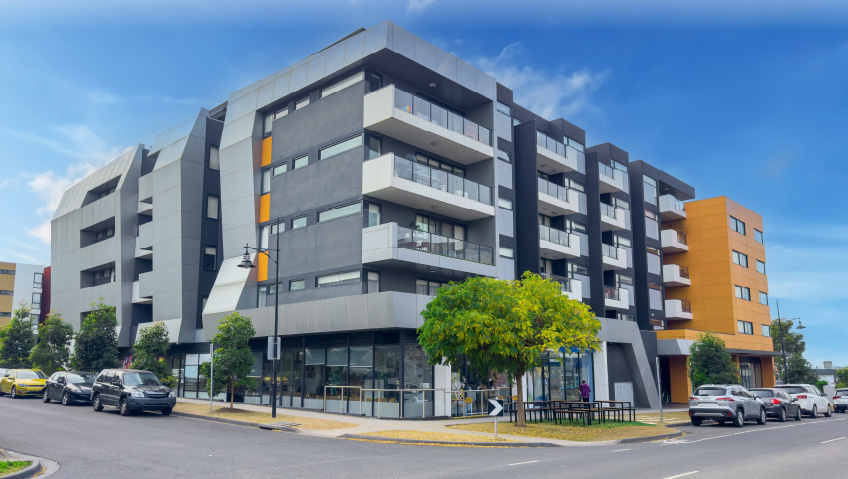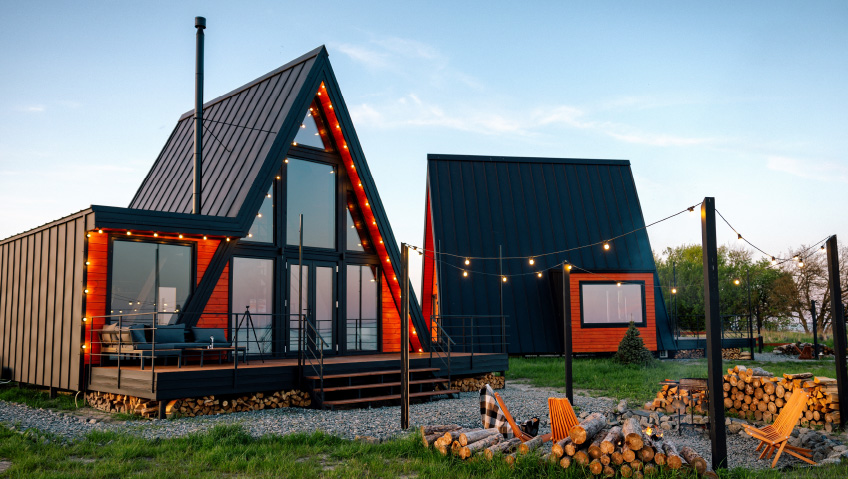Rigging International Group (RIG Rope Access) has made its name as a premier provider of rope access services for a full decade. Having recently celebrated the company’s tenth anniversary, co-owner Bob Goodwin explains that the original idea for the company was to provide twin focuses for its industry: rigging specialty and industrial rope access.
Chad Umbel is Goodwin’s partner, as well as RIG’s current Director of Operations and the main driver behind its construction services. Goodwin himself came into the fold in 2016 to help the business tighten its focus on the industrial rope access program, including running the IRATA (Industrial Rope Access Trade Association) International accredited operating and training programs. Goodwin also manages SPRAT (Society of Professional Rope Access Technicians) certifications and other industry training modules.
RIG provides these training offerings at both company-wide and individual levels. When it comes to industrial rope access, training and certification works a bit differently; IRATA is structured into a formal program consisting of three levels; one doesn’t need a prerequisite for experience at level 1, but it does require a minimum of 30 hours’ training delivery across four days as well as demonstration of competency in an assessment. The remaining levels each require 1000 hours of experience that must be done on site, a system that Goodwin says has worked very well. RIG often even trains people who work for competing rope access companies: “Our philosophy is that improving safety overall in the industry helps everyone,” he believes.
The company’s training program was something that Goodwin himself worked on as one of his first company projects, and he says it’s a key part of the RIG identity and focus. Everyone involved with the company must go through the training program, with key employees playing a trainer and instructor role. This allows RIG to create and maintain its robust safety culture, which the company considers both necessary to operations and a great advantage in and of itself.
Together, Goodwin and Umbel have helped RIG become a leading voice in rope access services. This is a construction-oriented company that works in myriad sectors—new construction projects, major retrofits and repairs, and projects such as audio installations, acoustic paneling, or any installation at height. It is absolutely essential to have specialized equipment and knowledge, Goodwin says, both for access and for rigging in these kinds of projects.
Recently, he says, there has been a lot of offshore wind energy development, one of the company’s biggest sectors. Wind farm development and construction hit an onshore peak in 2022, at which point it picked up and shifted to offshore development. However, an executive order enacted by President Donald Trump in January ordered a freeze on new leases for offshore wind projects, a move that will impact the industry and those invested in it.
Such risks are one reason why it’s important for RIG to be active in diverse areas, such as oil & gas (specifically offshore as well). Offshore space is limited, leaving little room for extensive scaffolding or heavy lifting equipment to access work areas on rigs. One of RIG’s core focuses has thus been performing major offshore repairs and retrofits on such rigs. The company also works across the broader energy sector, where safety is a top priority. According to Goodwin, this emphasis on safety aligns seamlessly with industrial rope access, wherein safety is front and center.
RIG sees a lot of work in the entertainment industry as well, supplying rigs with particular technical requirements, an industry that also sees its ups and downs, as illustrated by the COVID-19 pandemic. Conversely, new stadium and arena construction is an area that has stayed more consistent in momentum throughout various economic and cultural ups and downs. RIG has been involved in construction projects like Allegiant Stadium in Las Vegas for the Raiders football team, basketball stadiums like Chase Arena in San Francisco, and MLS (Major League Soccer) stadiums as well. The team’s expertise is rounded out by inspection, welding, confined space, and rescue operations, all of which can and do come up at any time.
No matter what industry RIG finds itself in, specialization is key to the company’s operations, which comes into play with its training offerings as well. “We are always looking to put the best tools in the hands of the people doing the work,” Goodwin says. For instance, RIG acts as a trade and technical training partner with organizations like climbing gear manufacturer Petzl, as well as a technical rigging partner with lifting and rigging provider Kito Crosby, which means that its equipment is very access-specific.
Being a technical partner helps RIG stay ahead of the competition and assist in developing new equipment. Many in the rope access industry are “gear nerds,” as Goodwin puts it, because the equipment plays such an important role, and thus the company dedicates a lot of time and resources to its equipment management program. RIG is constantly looking at ways to integrate new equipment, both for its own use and for the benefit of clients.
Equipment procurement is just one part of an overall drive toward expansion in RIG’s future. Currently, the company sports two main training centers in Las Vegas, Nevada and Anchorage, Alaska, which Goodwin tells us will soon be joined by an additional center in Mexico City, Mexico. Offshore wind development is another ongoing avenue for the company with continuing construction leases; since the offshore construction season goes from late April into October, the team is looking forward to getting back into it soon. RIG is also currently working on NFL stadium projects in Buffalo, New York for the Bills and in Nashville, Tennessee for the Titans, with other projects underway in the years to come, such as the Athletics ballpark in Las Vegas, which is in the planning and design phase.
Goodwin says that the rigging and rope access sectors have been growing and there is a lot of room yet for further growth—something that is evident when comparing how far along the United States is in industry integration compared to other countries like Canada, the UK, Brazil, and other European countries. There is still a lot of growth, he says, for industrial rope access and the potential for the company to expand into new areas. “There’s no crystal ball, but I’m generally very positive about the sector’s future,” Goodwin says. And this is good news for a team that never stops thinking about the best equipment solutions to get a job done safely and effectively.

